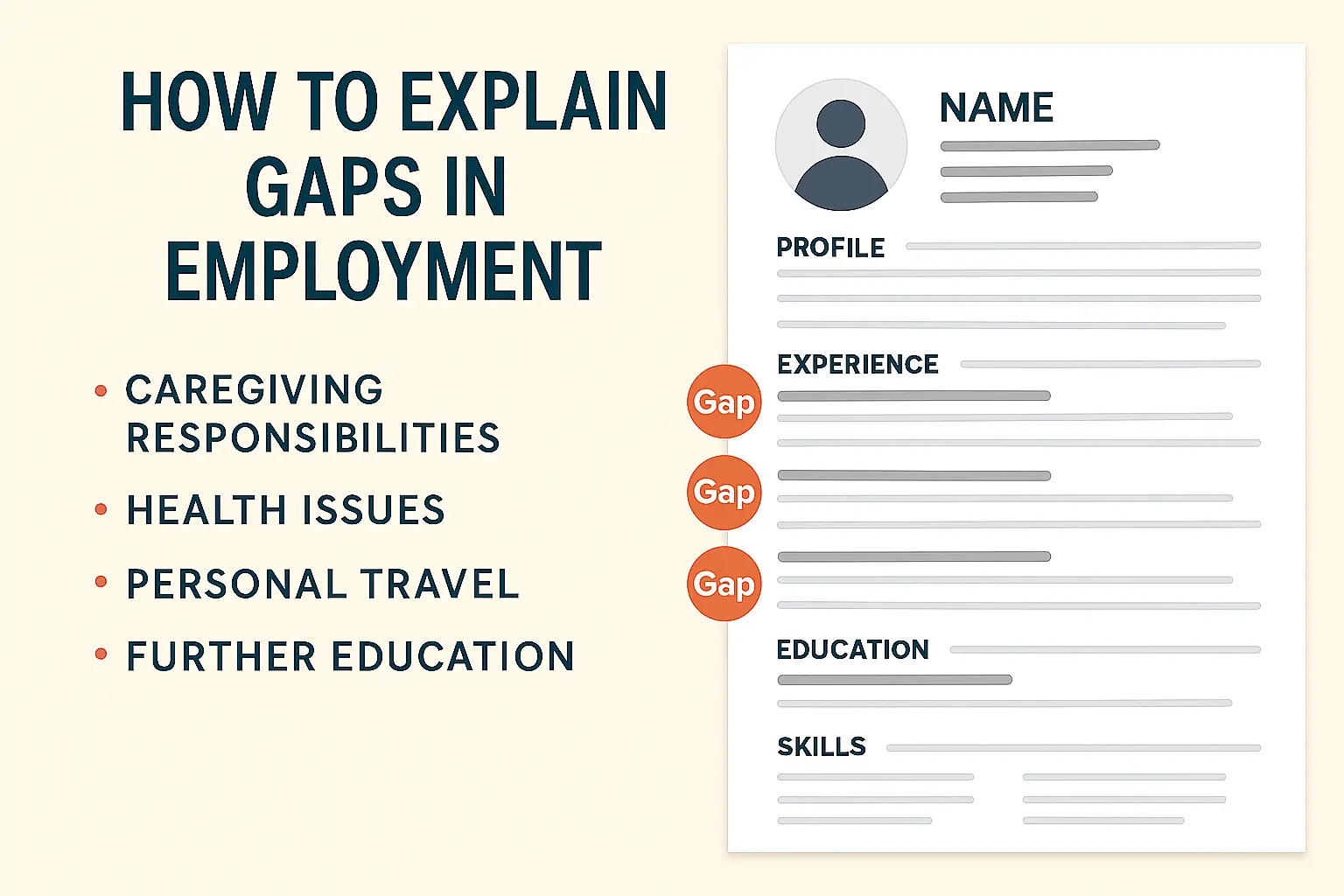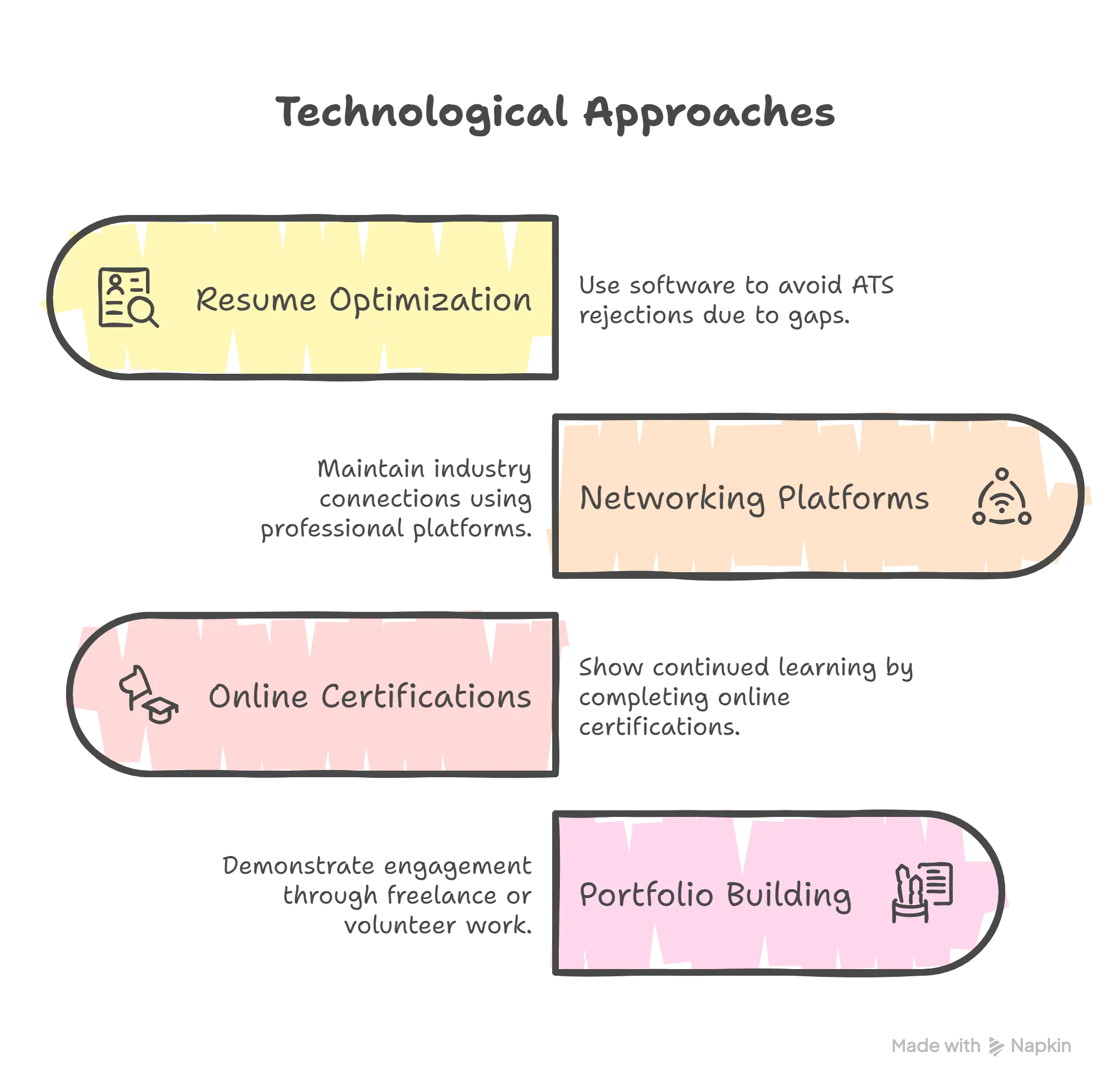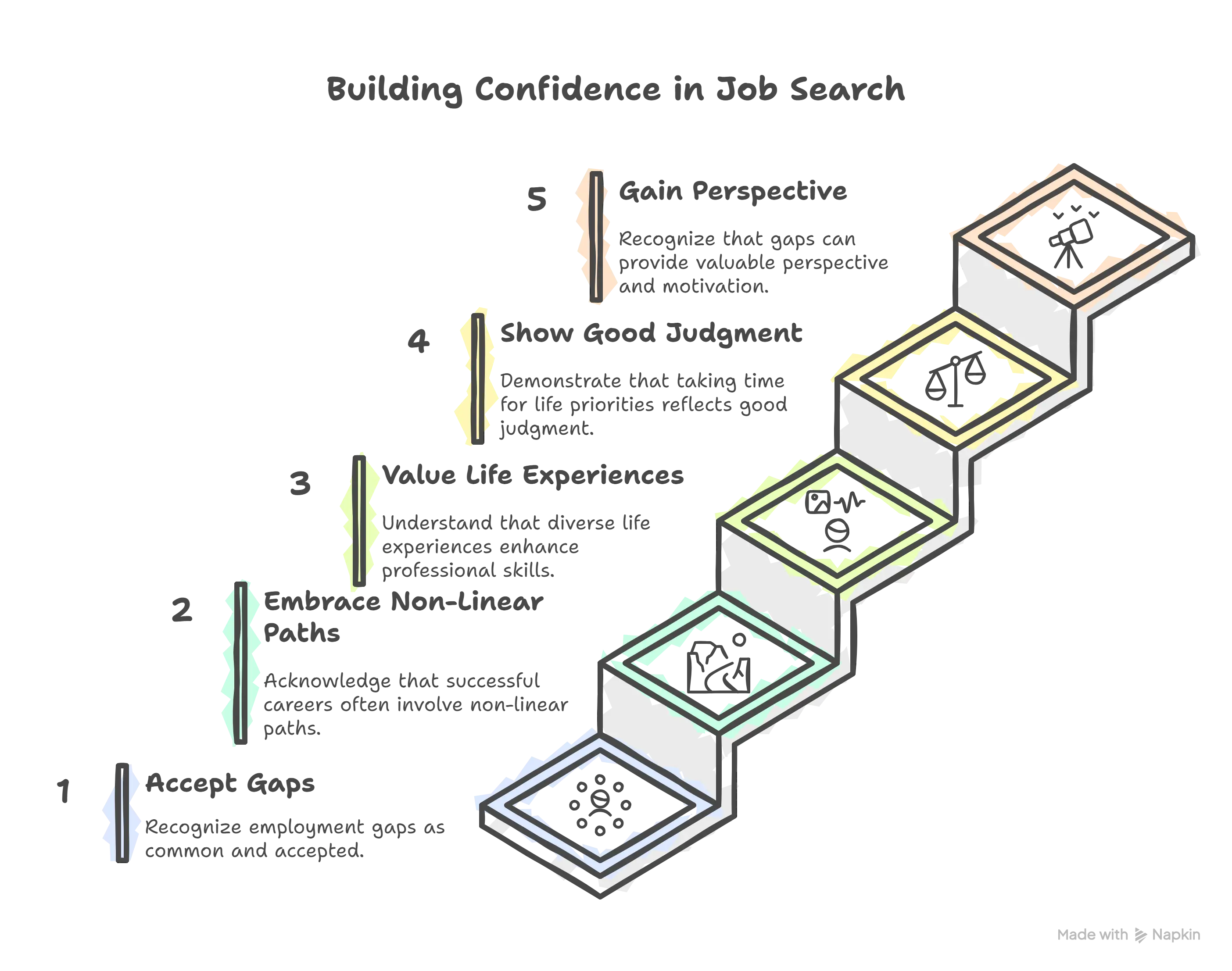
Employment gaps affect nearly 68% of workers at some point in their careers, yet many job seekers worry these gaps will hurt their chances of landing their next role. Whether you took time off to raise children, care for family, deal with health issues, or pursue education, gaps in employment are more common and acceptable than ever before.
The key isn't hiding your employment gap—it's explaining it strategically. Modern resume optimization tools and proven strategies can help you present your career break as a period of growth rather than a professional setback. Recent data from LinkedIn shows that 79% of hiring managers would hire candidates with career gaps on their resumes.
This guide provides specific methods to explain employment gaps on your resume, cover letter, and during interviews. You'll learn formatting techniques, strategic language, and how to turn your gap into a competitive advantage.
Understanding Employment Gaps: What Employers Actually Think
An employment gap is any period longer than six months when you weren't formally employed. According to Bureau of Labor Statistics data, the vast majority of working-age people experience unemployment at some point in their careers.
Recent surveys reveal that employers' attitudes toward career breaks have shifted significantly:
- 46% of employers now view candidates with career breaks as an untapped talent pool
- 51% of hiring managers are more likely to interview candidates who explain their gap reasons
- Family responsibilities account for 39% of all employment gaps
- Post-pandemic hiring has reduced stigma around career breaks
Strategic Resume Formatting for Employment Gaps
Use Years Instead of Months
For gaps under 12 months, list only years in your employment dates. This simple formatting change minimizes the visual impact of short breaks between jobs.
Example:
Instead of: "Marketing Manager, ABC Company, March 2020 - January 2022"
Write: "Marketing Manager, ABC Company, 2020 - 2022"
Create a "Career Break" Entry
For longer gaps, add a dedicated entry in your experience section. This proactive approach prevents questions and shows transparency.
Example:
Career Break | Full-time Parent
2021 - 2023
• Managed household operations and childcare responsibilities
• Maintained industry knowledge through online courses and professional reading
• Developed project management and multitasking skills
Use Functional Resume Format
Consider a skills-based resume format that emphasizes abilities over chronological work history. This approach works particularly well for multiple gaps or extended time away from work.
| Gap Length | Best Strategy | Resume Approach | Additional Actions |
|---|---|---|---|
| Under 6 months | Use years only | Standard chronological | Brief mention if asked |
| 6-18 months | Address in cover letter | Chronological with explanation | Highlight gap activities |
| Over 18 months | Create career break entry | Consider functional format | Emphasize relevant skills gained |
| Multiple gaps | Skills-first approach | Functional or hybrid | Focus on overall progression |
How to Explain Different Types of Employment Gaps
Family and Caregiving Responsibilities
The most common reason for employment gaps, family care is increasingly understood by employers. Focus on transferable skills developed during this time.
Resume Language:
"Full-time Parent and Household Manager (2020-2023)
• Coordinated complex schedules and managed multiple priorities
• Developed crisis management and problem-solving capabilities
• Maintained budget oversight and resource allocation"
Health and Medical Reasons
Keep explanations brief and focus on your readiness to return. You're not required to disclose specific medical details.
Resume Language:
"Medical Leave (2022)
• Addressed personal health matters, now fully resolved
• Completed professional development courses during recovery
• Ready to return to full-time employment"
Education and Skill Development
Educational gaps are generally viewed positively. Emphasize new qualifications and how they enhance your capabilities.
Resume Language:
"Professional Development | Independent Study (2021-2022)
• Completed MBA in Business Administration
• Earned Google Analytics and Digital Marketing certifications
• Developed expertise in data analysis and strategic planning"
Cover Letter Strategies for Employment Gaps
Your cover letter provides the perfect opportunity to address gaps proactively. Rather than leaving employers guessing, take control of the narrative by explaining your situation clearly and confidently.
Use this proven three-part approach:
- Acknowledge the gap briefly without defensive language
- Highlight valuable activities during your time away
- Demonstrate enthusiasm for returning to work
Example paragraph:
"Following my role as Marketing Director, I took an 18-month career break to care for my elderly parent during a serious illness. During this time, I maintained my industry knowledge by completing advanced certification courses in digital marketing and social media strategy. I'm now excited to bring these enhanced skills and my renewed energy to a challenging marketing role."
For professional assistance crafting compelling explanations, consider using an AI-powered cover letter generator that can help you frame your experience positively.
Interview Preparation for Gap Discussions
Prepare a concise, confident explanation that follows the "sandwich method": acknowledge the gap, highlight positives, and redirect to your qualifications.
Template Response:
"I took [time period] off to [brief reason]. During that time, I [specific activities/skills gained]. This experience has made me [positive outcome], and I'm excited to apply these strengthened abilities in this role."
What NOT to Say
- Don't over-apologize or sound defensive
- Avoid negative language about previous employers
- Don't provide unnecessary personal details
- Never lie or misrepresent your timeline
Turning Employment Gaps into Competitive Advantages
Modern employers value diverse experiences and life skills. Position your gap as a period of intentional growth rather than lost time.
Skills Gained During Common Gap Types
Parenting/Caregiving: Project management, crisis handling, multitasking, emotional intelligence, patience, communication
Health Recovery: Resilience, self-care, goal-setting, adaptability, perspective, renewed focus
Education/Training: New technical skills, industry knowledge, learning agility, self-motivation, goal achievement
Travel/Personal Development: Cultural awareness, adaptability, independence, communication, global perspective
According to recent research on career gaps, 56% of employees who took career breaks reported acquiring new skills during their time away, while 54% felt they were better at their jobs upon return.
Leveraging Technology and Modern Tools
LinkedIn's Career Break feature now allows users to officially add career breaks to their profiles with 13 different categories of explanations. LinkedIn data shows that over 1 million members have utilized this feature, helping to normalize employment gaps across industries.
Other technological approaches include:
- Using resume optimization software to ensure gaps don't trigger ATS rejections
- Leveraging professional networking platforms to maintain industry connections
- Completing online certifications during gaps to show continued learning
- Building a portfolio of freelance or volunteer work to demonstrate ongoing engagement

Special Considerations for Extended Gaps
For gaps longer than two years, additional strategies can help address potential employer concerns about skill currency and market readiness.
Demonstrate Current Market Knowledge
- Complete recent industry certifications
- Attend virtual conferences and webinars
- Participate in professional associations
- Stay current with industry publications and trends
Build a Re-entry Portfolio
- Document any freelance or consulting work
- Showcase volunteer projects that used professional skills
- Create examples of how you've stayed current in your field
- Highlight personal projects that demonstrate relevant abilities
For those transitioning back to work, specialized cover letter strategies for career changers can provide additional guidance on positioning your unique background as an asset.
Building Confidence for Your Job Search
Your mindset about your employment gap directly affects how others perceive it. Confidence and clarity in your explanation demonstrate professional maturity and self-awareness.
Remember these key points:
- Employment gaps are increasingly common and accepted
- Many successful professionals have non-linear career paths
- Diverse life experiences often create stronger, more empathetic employees
- Taking time for important life priorities shows good judgment
- Gaps can provide valuable perspective and renewed motivation
Focus on your future value rather than past absences. Employers hire people who can solve their current problems and contribute to their success—your employment gap doesn't change your ability to deliver results.

FAQ: Common Questions About Employment Gaps
How long of a gap is considered a red flag by employers?
Generally, gaps longer than six months require explanation, but there's no automatic "red flag" length. What matters more is how you explain the gap and what you did during that time. Recent surveys show that 79% of hiring managers would hire candidates with employment gaps when the reason is clearly communicated.
Should I include months or just years on my resume?
For gaps under 12 months, using years only (2021-2022) can minimize the visual impact. For longer, intentional breaks, including months shows transparency. Always be prepared to discuss specific timeframes during interviews, regardless of how you format dates on your resume.
Can I leave employment gaps completely unexplained?
While not illegal, unexplained gaps often create more questions than answers. Proactively addressing gaps shows professionalism and prevents hiring managers from making negative assumptions. A brief, honest explanation is almost always better than leaving gaps to speculation.
How do I explain multiple employment gaps on my resume?
For multiple gaps, consider using a functional or hybrid resume format that emphasizes skills over chronology. Group similar experiences together and focus on your overall career progression and accumulated expertise rather than specific timelines.
What's the best way to explain a gap due to being laid off?
Be straightforward: "Following company restructuring at XYZ Corp, I used this transition period to enhance my skills through certification courses and strategic job searching." Focus on productive activities during your search and avoid negative language about your former employer.
Is it better to address employment gaps in my resume or wait until the interview?
Address significant gaps proactively in your resume or cover letter rather than waiting for interviews. This approach demonstrates transparency and allows you to control the narrative. Hiring managers appreciate candidates who communicate clearly about their career journey from the start.